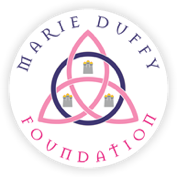Irish Dance History / The History of Irish Dance
There are many references to group or social dances performed in Ireland throughout the 16th and 17th centuries. However, most accounts were written by visiting English historians who were concerned with the social and economic conditions of the country rather than the dancing itself. They inform us that group or ‘country’ dances were performed by the Irish at social gatherings including weddings, fairs and holidays. These would have been simple dances which almost anyone could have joined and indeed they were not distinctly Irish but rather dances that were common throughout western Europe.
In the early 1700s the ‘Travelling Dance Master’ appeared on the scene in Ireland and he made a major contribution to the dancing as we know it today.
He was a professional, educated man who taught dancing for a living and introduced ‘step dancing’, so called because it was executed (as it still is) in eight bar ‘steps’. He also introduced a high degree of discipline including the holding of the hands (but not rigidly so) by the side.
In 1893 the Gaelic League was established to promote all aspects of Irish culture, especially literature and language and to a lesser extent the ‘native dancing’, which by this stage was becoming known as Irish Dancing (or national dancing of Ireland).
The League was to have a profound effect on Irish dancing. While the travelling dance masters operated mostly in the Munster area, the Gaelic League introduced dancing classes not only throughout Ireland, but as far away as London (by the early 1900s) and Butte in Montana, USA.
The London Gaelic League organised social evenings at which solo and eight hand dances were performed and taught. Representatives of the London branch visited Ireland in 1900 to collect Irish figure dances and this led to the first publication of ‘céilí’ or figure dances. In 1898 the branch of the Gaelic League in Macroom held an afternoon of competitions (with six competitors in the dancing section) and thus started the phenomenon that we now know as the ‘feis’. Shortly afterwards ‘feiseanna’ were held not only throughout Ireland but also in Glasgow (1902) and London (1907).
In the early 1900s Irish dancing became known as ‘National Dances of Ireland’ and the performance and teaching of both the solo and the figure dances became an expression of Irish Nationalism. Special costumes were introduced and they were adorned with various Irish symbols. Over the years however, the dancing has changed and the costumes no longer reflect an Irish identity. Irish dancing is now taught all over the world and performed by people with little or no Irish connection but who have been attracted to the dancing because of the intricacies and extreme discipline that the dance genre requires. Overseas dancers and teachers now make a major contribution to this ever-changing and evolving dance form which appeals to millions of people worldwide.
The Irish Dancing Commission (An Coimisiún le Rincí Gaelacha)
The Commission was established by the Gaelic League in 1930 to legislate for Irish dancing (in Ireland). It had its first meeting in 1930 and rules were drawn up in 1931. In 1932-33 the Commission established a register of those qualified to teach and to adjudicate Irish dancing. It listed 32 teachers and 27 adjudicators, all Irish. That same year the All-Ireland championships were established and run by the Commission in the Mansion House Dublin.
An examination system was established in 1943 and the T.C.R.G (Teastas Coimisiún le Rincí Gaelacha) and A.D.C.R.G (Árd Diploma Coimisiún le Rincí Gaelacha) were presented to the three successful candidates.
By the late 1960s, however, the Commission began to change from being an Irish body to that of a global organisation. This gradual change was due to the increase in contact with overseas teachers and special exams were set up to facilitate this development, the first of which were held in England (1969) North America (1967) and Australia (1969).
There are now more than 1800 teachers, adjudicators and examiners around the world working in Ireland, England, Scotland, Wales, New Zealand, Australia, Canada, USA, Brazil, Mexico, Argentina, South Africa, Kenya, Holland, Belgium, France, Switzerland, Germany, Austria, Italy, Hungary, Poland, Russia, Norway, the United Arab Emirates and Asia.
Today, the two largest international competitions, the All-Ireland Championships (established in the 1940s) and the World Championships (1970) are very much seen as a celebration of the Celtic heritage that connects the peoples of the world as well as being a showcase for all that is uniquely special about Irish Dance.
Thanks to the extraordinary success of shows such as Lord of the Dance, Feet of Flames, Celtic Tiger and Riverdance, interest in Irish Dance is flourishing; it is estimated that more than 250,000 people regularly attend lessons in Irish Dancing, whether step dancing (performed by individuals) or team dancing (both traditional ceili and modern invention).
The Foundation would like to thank Dr John Cullinane, Irish Dance Historian, for contributing this information about The History of Irish Dance for our website.
For further information about Irish Dance History, John can be found on cullinanejohn@eircom.net
